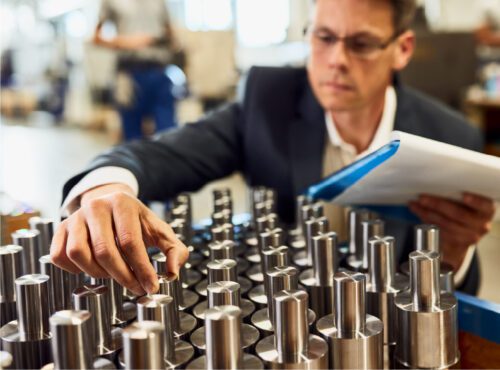As automotive manufacturing evolves, efficiency, cost reduction, and quality assurance have become paramount. One of the most effective ways to optimize production is through fastener standardization—a strategic approach that reduces complexity, minimizes inventory costs, and enhances assembly efficiency. Standardizing fasteners across vehicle platforms ensures consistency in quality, improves supply chain logistics, and streamlines procurement, all while reducing overall costs for OEMs and Tier suppliers.
Challenges in Automotive Fastener Selection

Automotive manufacturers traditionally face multiple challenges when sourcing and managing fasteners:
- Excess SKU proliferation: The use of different fasteners for similar applications increases complexity.
- Supply chain inefficiencies: Managing numerous suppliers leads to inconsistent lead times and logistical inefficiencies.
- Cost discrepancies: Different parts with similar functionalities often result in unnecessary procurement costs.
- Assembly inconsistencies: Variability in fasteners can lead to production slowdowns and quality control issues.
Benefits of Fastener Standardization

Standardizing fasteners across vehicle platforms can significantly benefit automotive manufacturers by addressing these challenges and offering advantages such as:
1. Cost Reduction & Procurement Efficiency
- Lower purchasing costs: Bulk ordering of standardized fasteners enables better pricing and supplier negotiations.
- Simplified supplier base: Reducing the number of vendors minimizes administrative costs and enhances supply chain resilience.
- Reduced warehousing and inventory costs: Fewer part numbers lead to optimized storage and stock management.
2. Enhanced Assembly Efficiency & Quality Control
- Simplified worker training: Standardized fasteners ensure assembly line workers become more efficient with fewer variations to handle.
- Reduced rework and defects: Using fewer, proven fastener types decreases the risk of improper installations.
- Streamlined tooling requirements: Fewer fastener variations mean lower tooling costs and better compatibility across manufacturing sites.
3. Improved Supply Chain Resilience & Lead Time Optimization
- Easier sourcing: Standard fasteners are readily available, mitigating supply chain disruptions.
- Reduced lead times: OEMs benefit from shorter production cycles due to fewer custom fastener requirements.
- Better vendor management: Consolidating fastener suppliers strengthens long-term strategic relationships and enhances quality assurance.
Implementation Strategies for Fastener Standardization

To successfully implement fastener standardization, automotive manufacturers should adopt a structured approach:
1. Conduct a Fastener Audit
- Identify redundant SKUs across different vehicle platforms.
- Analyze fastener performance and identify areas for standardization.
2. Develop Standardization Guidelines
- Define standard fasteners for common applications (e.g., panel fasteners, structural bolts, trim clips).
- Establish uniform performance and material specifications.
3. Collaborate with Suppliers or Distributors for Consolidation
- Engage with fastener suppliers to optimize part selection.
- Develop long-term contracts for high-volume standardized fasteners.
4. Integrate Standardization into Design & Engineering
- Ensure new vehicle designs incorporate standardized fasteners.
- Align engineering teams with procurement and manufacturing to maintain consistency.
Case Study: Fastener Standardization Success in an OEM
A major automotive OEM partnered with EFC International to standardize fasteners across multiple vehicle models. The initiative resulted in:
- 25% SKU reduction, streamlining procurement and inventory management.
- 30% cost savings on fastener-related procurement.
- Improved assembly efficiency, reducing production downtime by 15%.
- Greater supply chain stability, minimizing disruptions and improving lead times.
Fastener standardization is a key strategy for optimizing automotive manufacturing. By reducing SKU complexity, lowering procurement costs, improving assembly efficiency, and enhancing supply chain resilience, OEMs and Tier suppliers can achieve significant operational benefits.
As a trusted fastener distributor, EFC International partners with automotive manufacturers to implement tailored standardization solutions, ensuring long-term cost savings and efficiency improvements.
For more information on how EFC International can help streamline your fastener strategy, contact us today.
Written by:
Chris Kanaan
Senior Vice President of Sales, Global Transportation
What is fastener standardization in automotive manufacturing?
Fastener standardization involves using consistent fasteners across vehicle platforms to reduce complexity and enhance assembly efficiency. This approach ensures quality consistency, improves supply chain logistics, and reduces costs for OEMs and Tier suppliers.
What are the main benefits of fastener standardization?
The benefits include:
- Cost reduction and procurement efficiency: Lower purchasing costs and simplified supplier management.
- Enhanced assembly efficiency and quality control: Simplified worker training and reduced rework.
- Improved supply chain resilience: Easier sourcing and reduced lead times.
How does fastener standardization impact the automotive supply chain?
Standardization improves the supply chain by making fasteners more readily available, reducing lead times, and strengthening supplier relationships. This leads to increased resilience and shorter production cycles.
What strategies can automotive manufacturers use to implement fastener standardization?
To implement standardization, manufacturers should:
- Conduct a fastener audit to identify redundant SKUs.
- Develop standardization guidelines for common applications.
- Collaborate with suppliers for consolidation.
- Integrate standardization into design and engineering processes.
What real-world results have been achieved through fastener standardization?
A major OEM partnered with EFC International achieved:
- 25% SKU reduction
- 30% cost savings on fasteners
- 15% reduction in production downtime
- Improved supply chain stability
These results demonstrate the tangible benefits of fastener standardization in automotive manufacturing.
